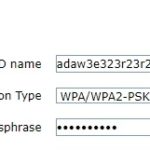Ping is a command that sends data to another computer, and then waits for an acknowledgement. Ping works by sending an echo request packet of information to the host you want to communicate with. The ping command can be used in Windows or Mac OS X operating systems.
Pinging a computer is when you send data packets to it, and by doing so verify that the computer is online. This can be done for various reasons, but most often people ping their computers in order to find out whether or not they are still connected.
To do this, type “ping” into your address bar followed by an IP address (such as google.com), and press enter. If the website displays on your browser then you know that the IP address is reachable from your location – meaning it’s possible for you to connect with it without any issues!
It’s important to note that ping checks are not always indicative of actual connectivity between two machines in terms of network access or remote desktop use. This means that even if you successfully “pinged” your computer from another location, there may still be some form of firewall blocking internet traffic at either end – so don’t take these results too seriously!
The most common usage for pinging an IP address is to check whether or not a connection is still active and reachable. This can be done for various reasons, but most often people ping their computers in order to find out whether or not they are still connected. To do this, type “ping” into your address bar followed by an IP address (such as google.com), and press enter. If the website displays on your browser then you know that the IP address is reachable from your location – meaning it’s possible for you to connect with it without any issues!
The ping command can also be used to troubleshoot network connectivity, and it’s commonly used in cases of packet loss. If the website doesn’t load when you type “ping” then either your computer is offline or the IP address isn’t reachable from where you’re located – but if it does work, let us know what happened!
In order for a machine to reply with an echo request/reply (which takes approximately one second), both machines must have set their respective TTLs correctly. The default values are 128 on Linux and 32 on Windows; this means that each device will wait at least two seconds before considering less timeouts as possible failures. Some operating systems allow changing these settings via appropriate parameters of a pinging command.





